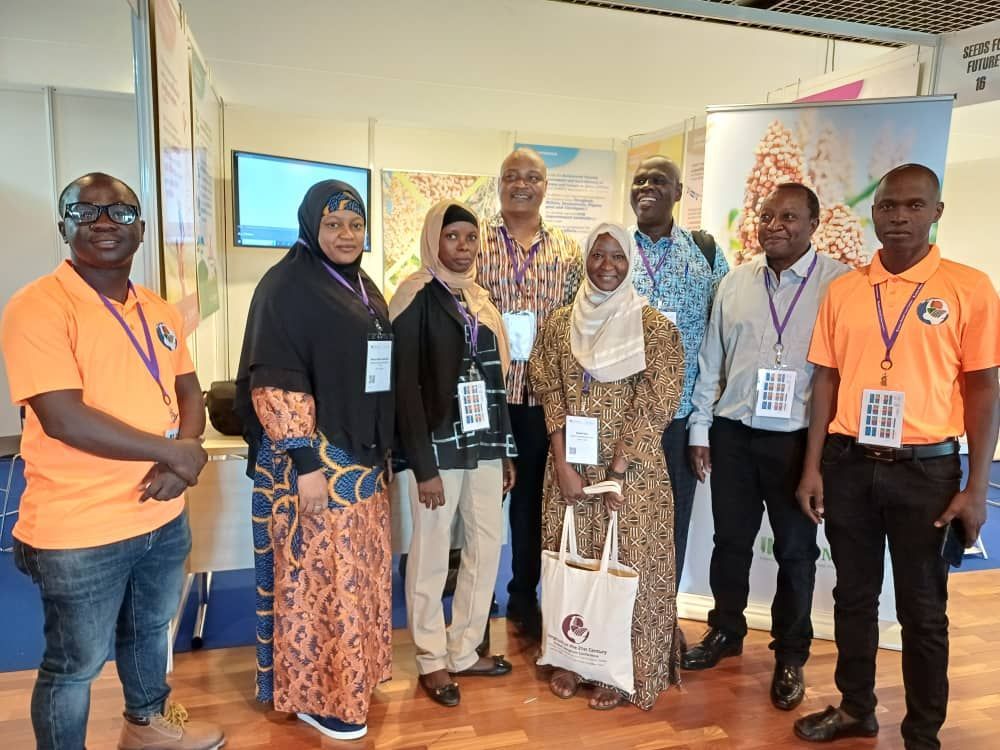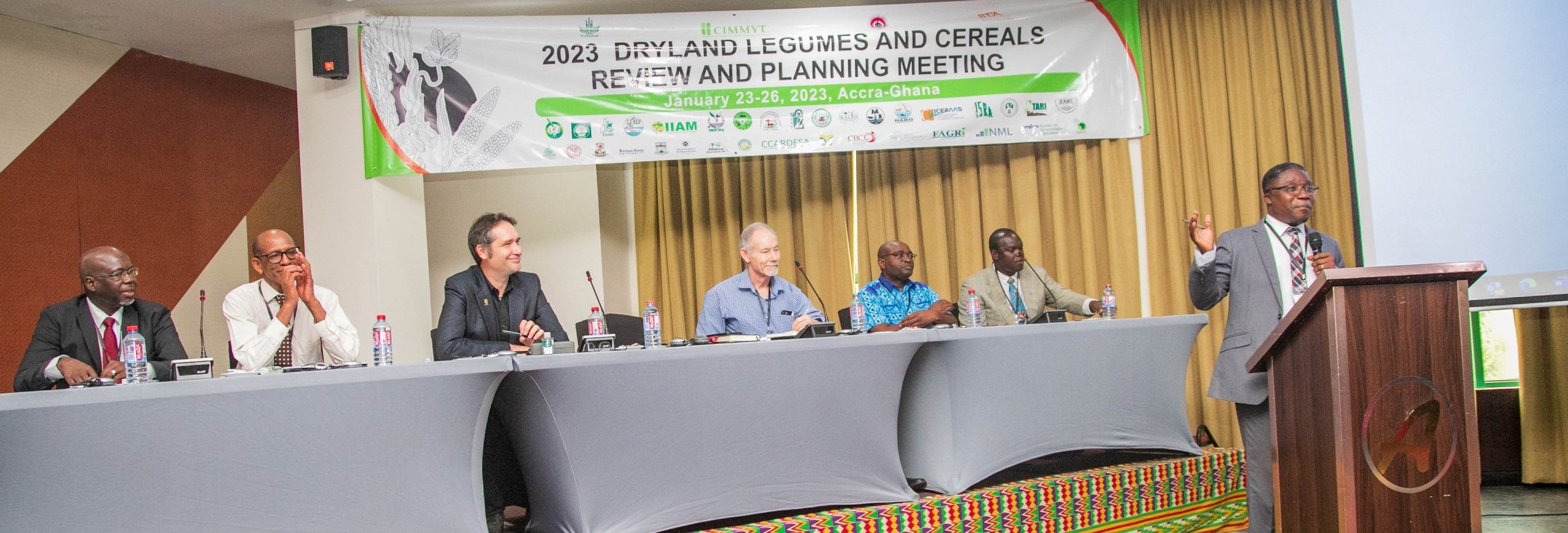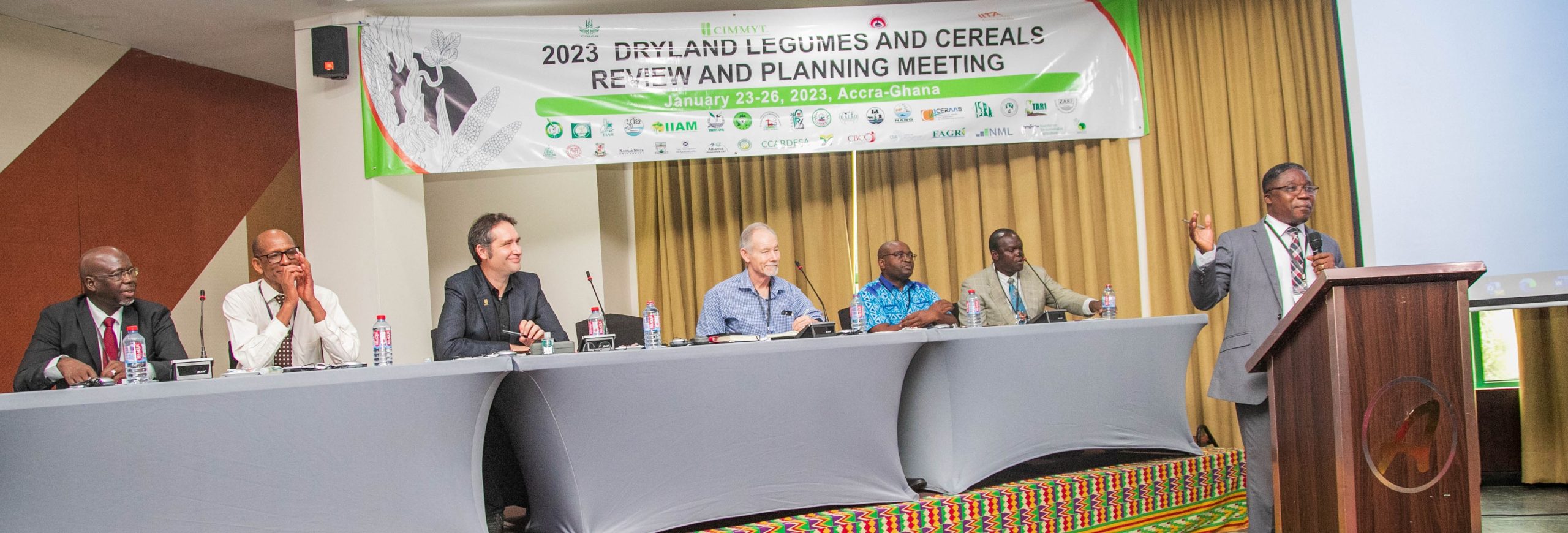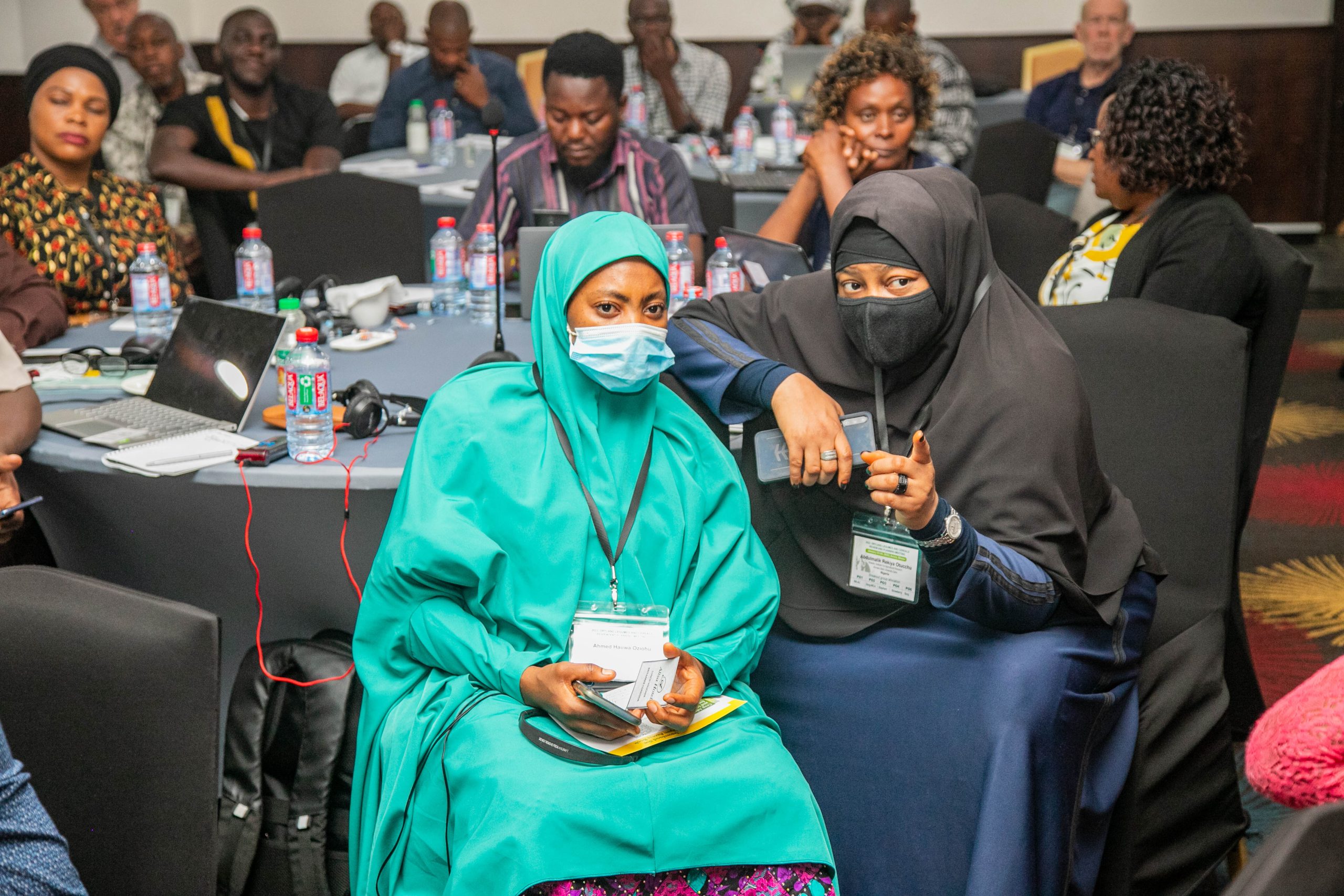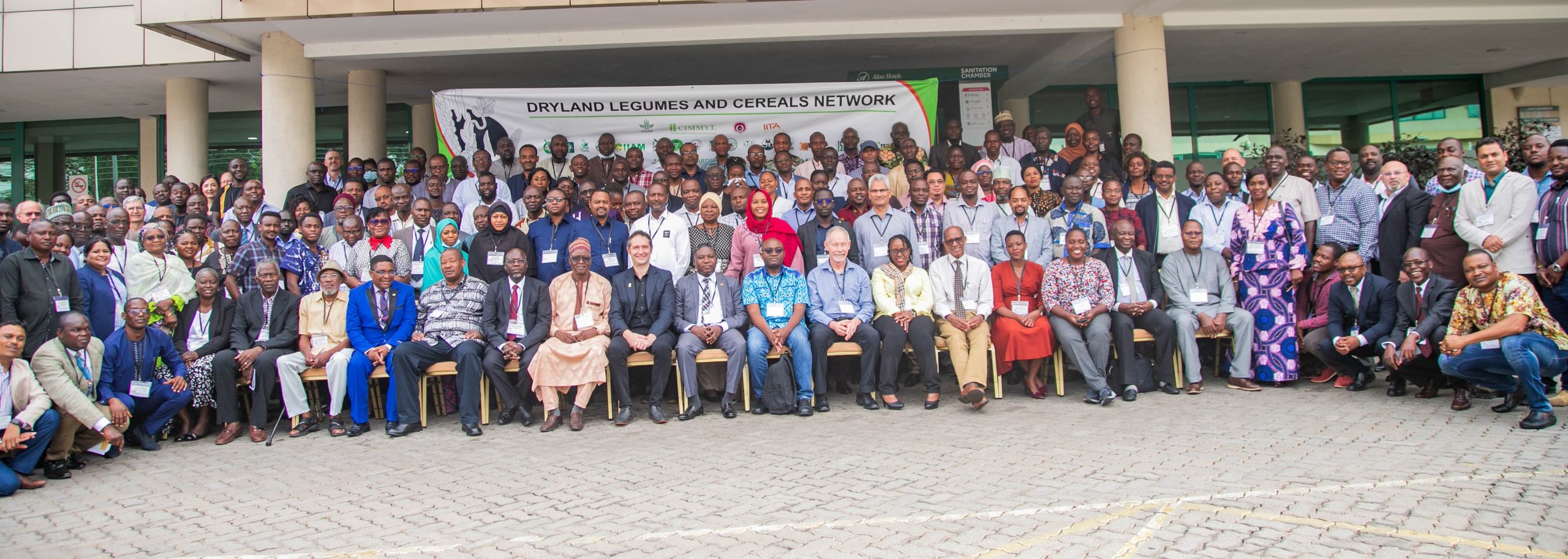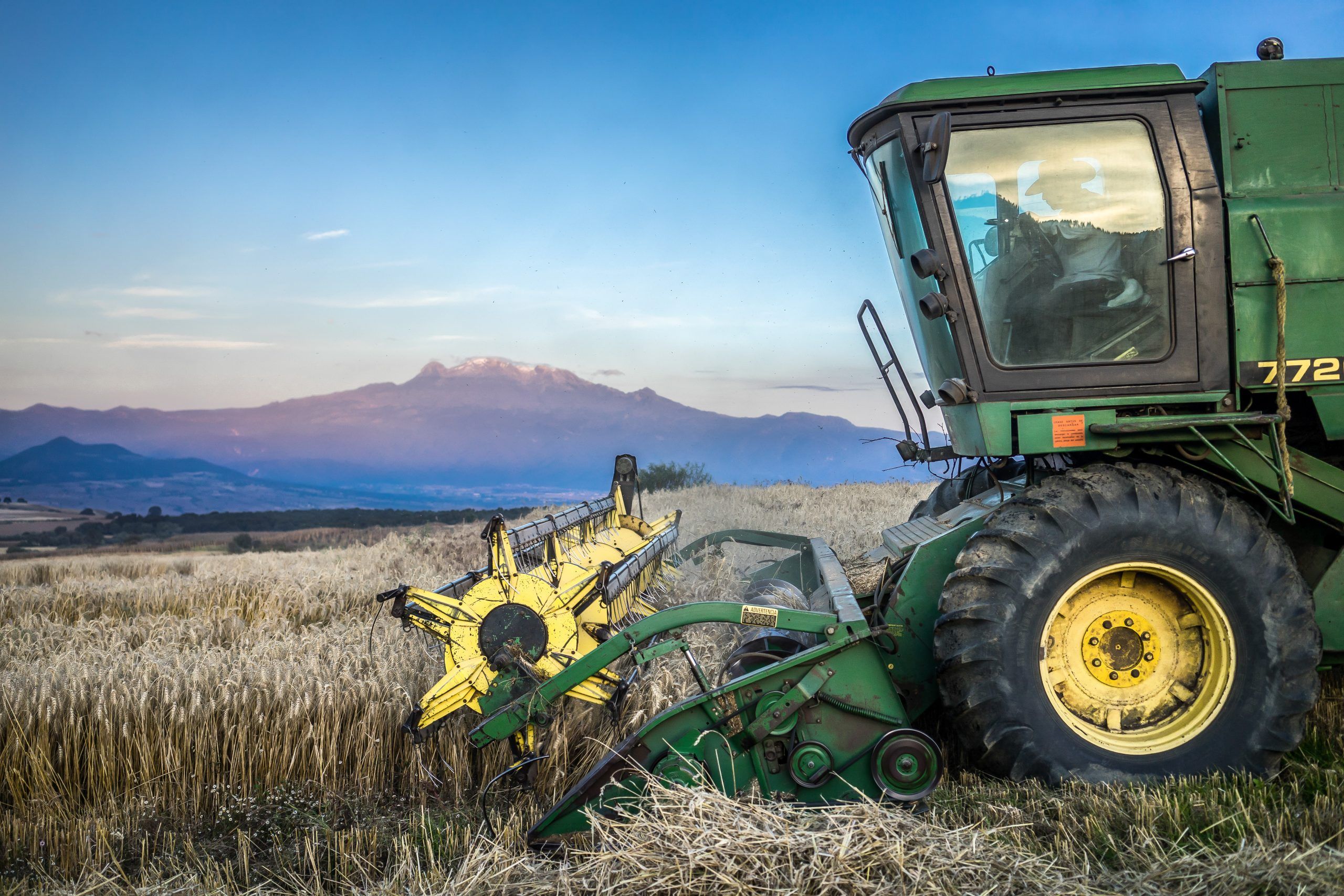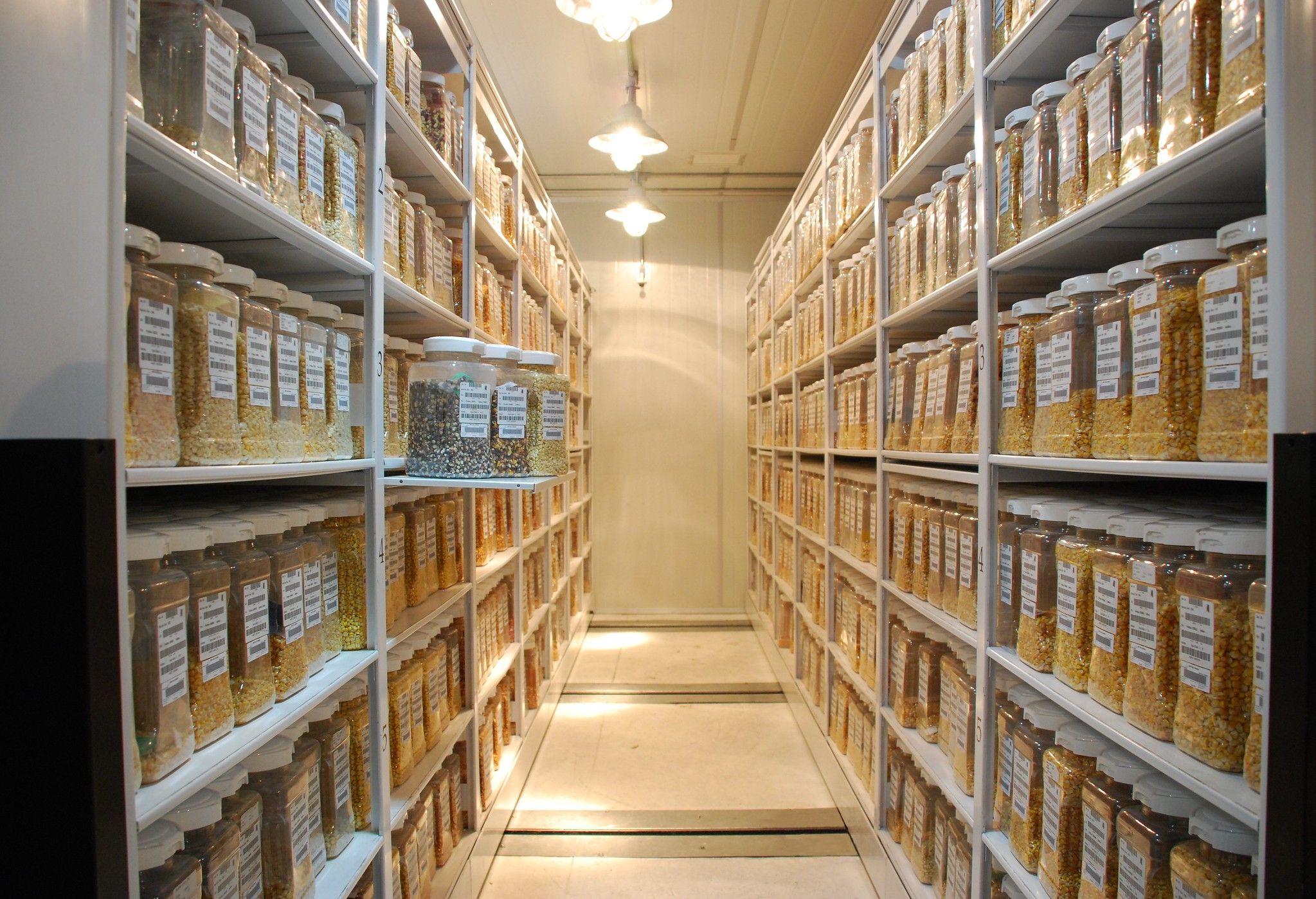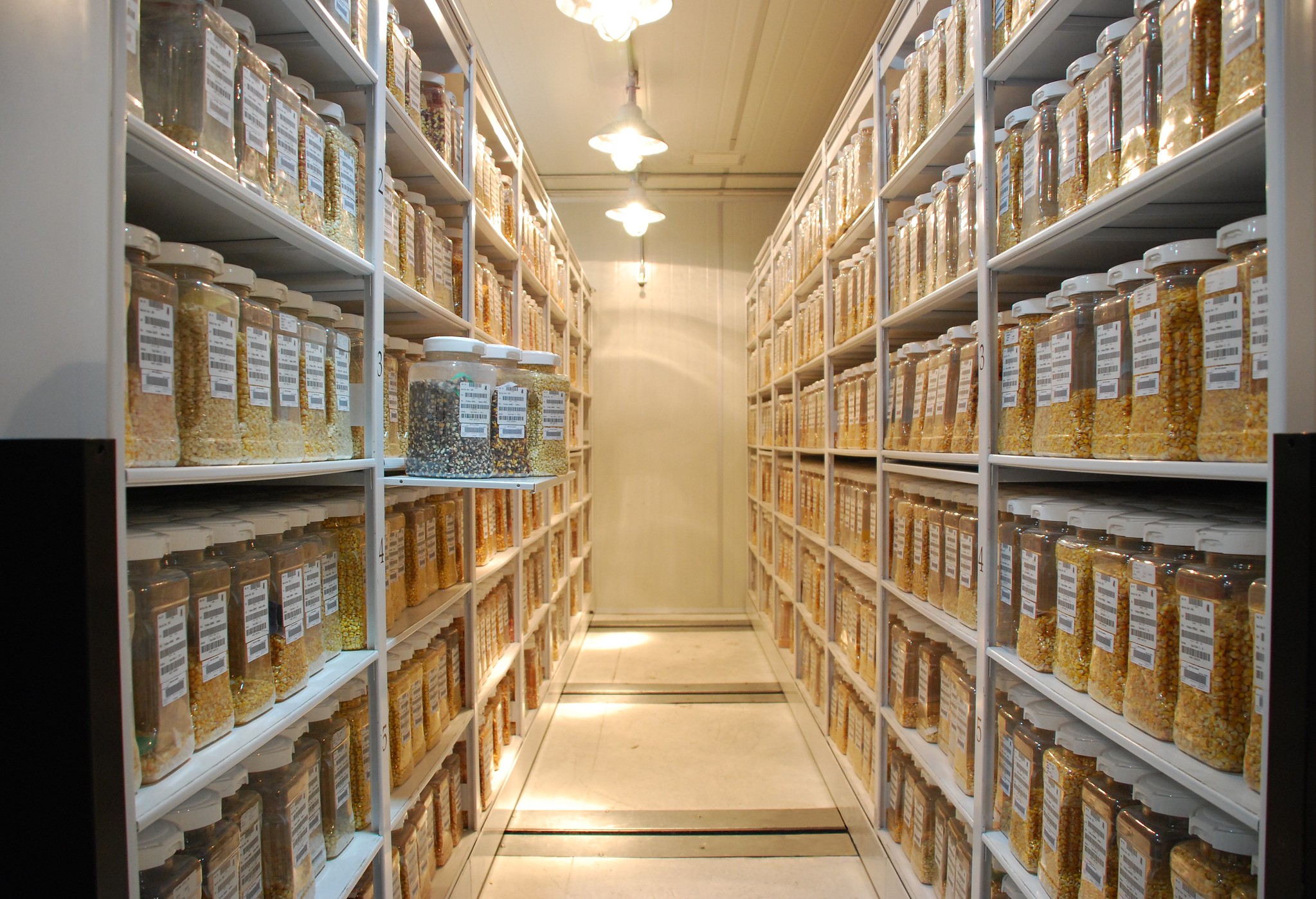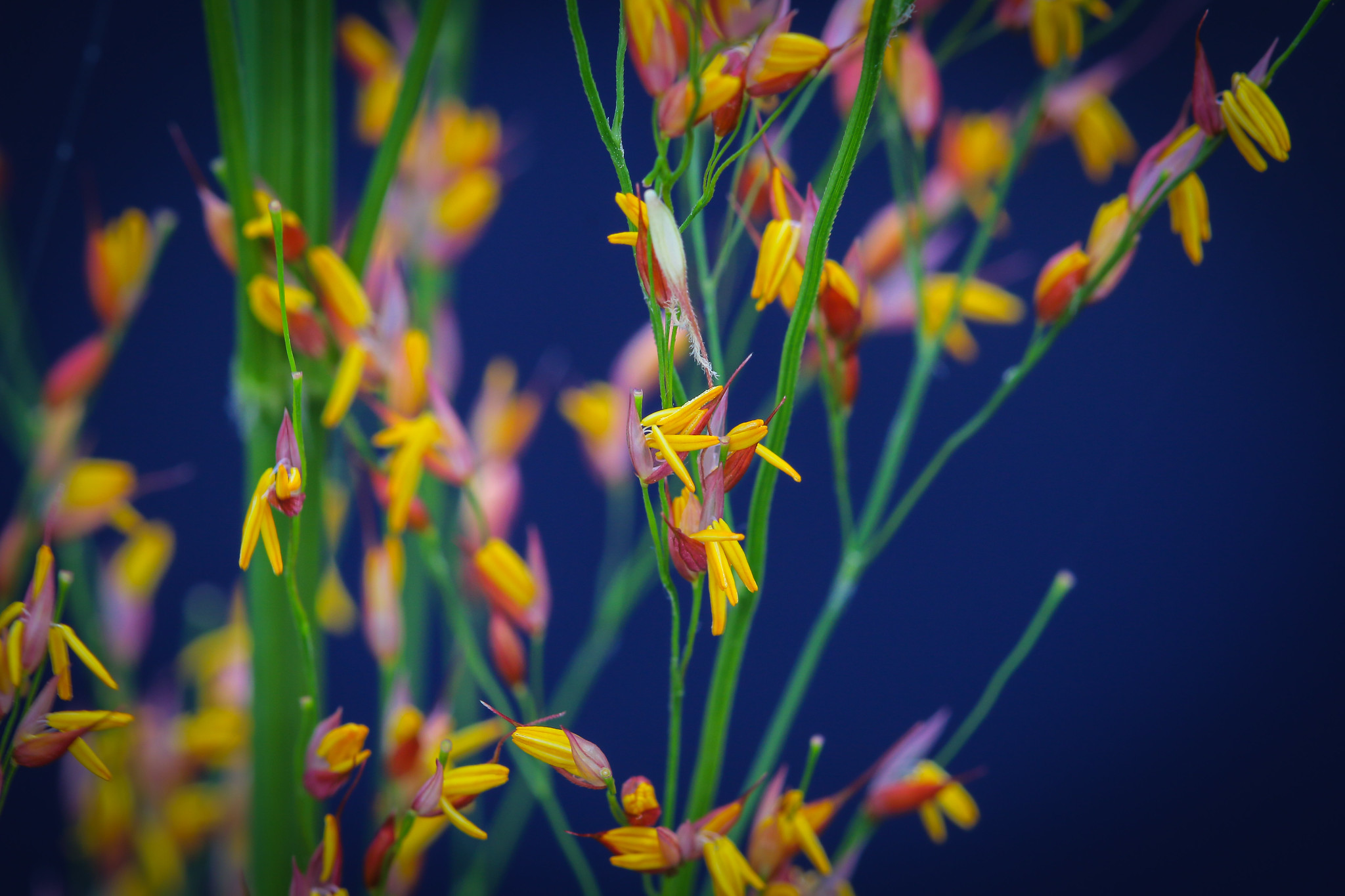Unveiling the potential of sorghum to shape sustainable agriculture
Scientists, researchers and stakeholders from around the world gathered at the global sorghum conference from June 5-9, 2023, in Montpellier, France, to discuss the latest developments in sorghum research, innovation, challenges and sustainable practices in the face of climate change.
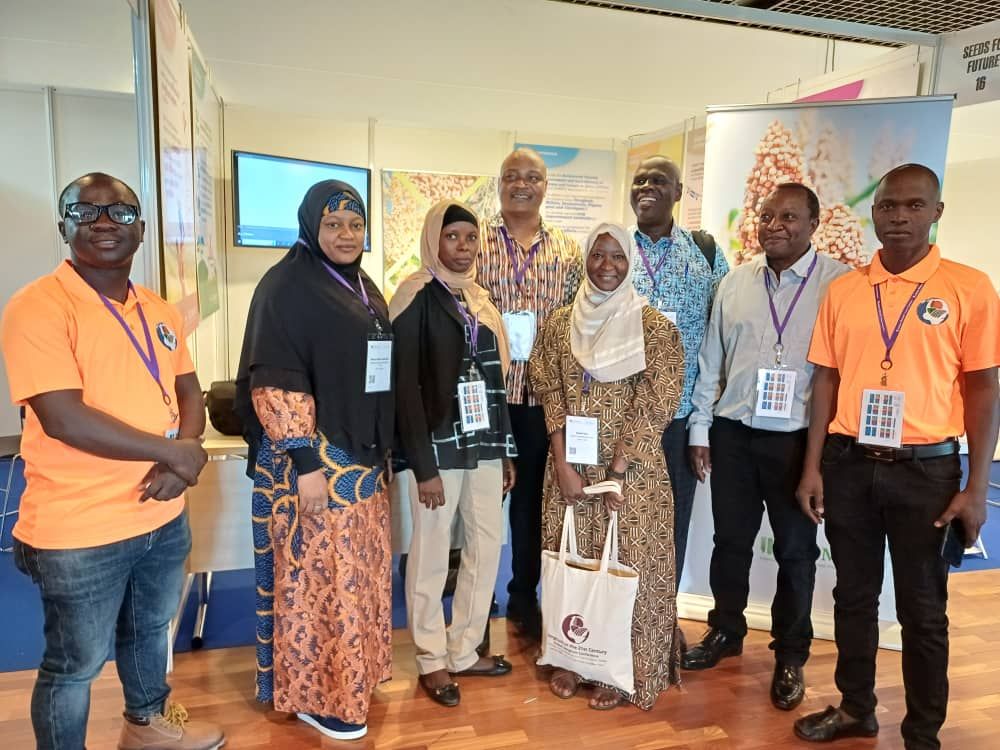
Participating as a sponsor, the International Maize and Wheat Improvement Center (CIMMYT) demonstrated valuable insights and technological advances in a variety of sessions. Two CIMMYT representatives and six National Agricultural Research Extension Systems (NARES) partners, presented findings, addressing critical topics such as adaptation genetics and genomics, climate and environmental change, sorghum yield optimization techniques and the development of new sorghum products for human consumption.
CIMMYT has initiated a crop improvement program, known as the Dryland Crop Program (DCP), focused on sorghum, millets (pearl and finger millet), chickpea, pigeon pea and groundnut. The program is in the process of establishing a CGIAR-NARES network with stakeholders form 17 countries in Africa to collaboratively create, develop and implement a crop improvement network for these crops in Eastern, Southern, Western and Central Africa. This cooperative approach will enable CIMMYT and the network to identify suitable products for specific market segments, establish joint breeding pipelines, conduct on-farm germplasm testing and ultimately release and scale up superior seed varieties. This will ultimately lead to improving the quality and yield of these dryland crops, ensuring food security and promoting sustainable agricultural practices.
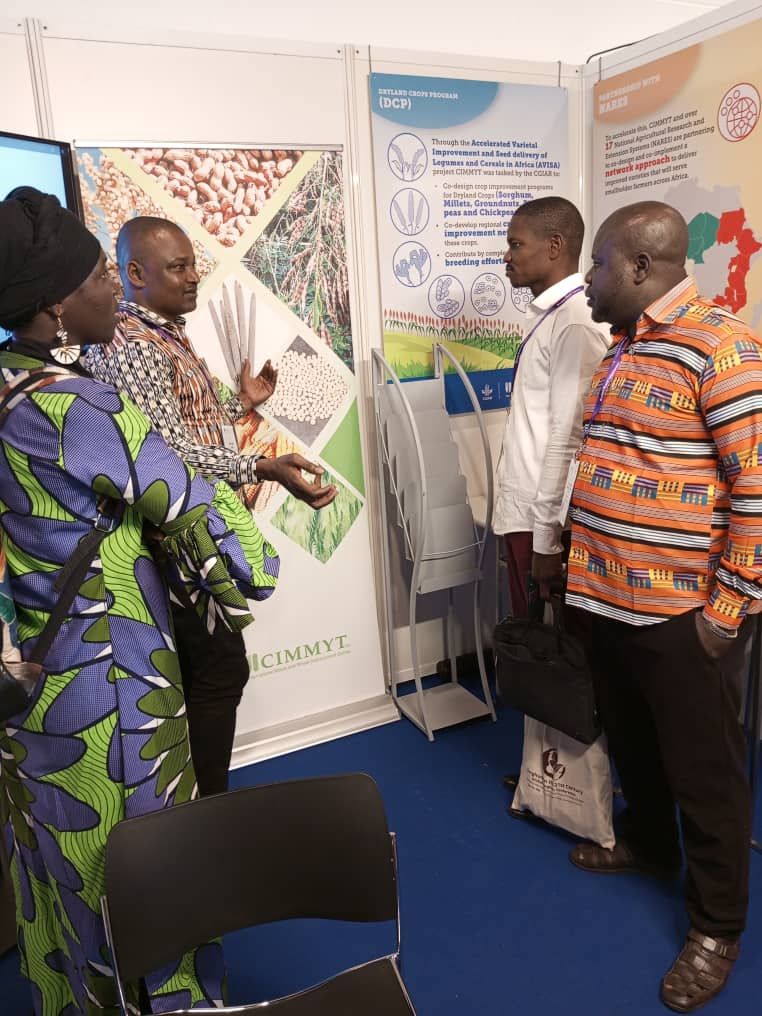
Abhishek Rathore presented “Understanding sorghum race level diversity and development of sorghum genomic resources by using deep learning-based variant calling approach,” which examines sorghum’s racial diversity and the creation of genomic resources. Using a deep learning-based variant, researchers identified race-specific genetic signatures and gained a comprehensive understanding of sorghum race structure and domestication processes. These discoveries pave the way for more targeted breeding programs and the identification of single nucleotide polymorphism (SNPs) markers.
Baloua Nebie presented a poster on “Crop improvement network approach to co-develop market required products and strengthen partners’ capacities in Africa.” He indicated the dryland crops improvement programs are in collaboration with CGIAR-NARES programs, with CIMMYT acting as a facilitator within the network to deliver varieties more quickly and efficiently in response to market demand. The network is comprised of 10 NARES in Western and Central Africa, seven NARES in Eastern and Southern Africa, as well as farmer organizations and seed companies. In addition to their national roles, NARES partners will contribute to regional activities based on their comparative advantages; these roles include co-sharing of regional pipelines development, early to late testing of breeding lines, product release and scaling. Through consultative meetings and program evaluation, these activities will be aligned with the regional and country-specific market segments identified by stakeholders.
Alex Zongo of the Institut de l’Environnement et des Recherches Agricoles (INERA) / CNRST – Burkina Faso, a NARES partner, presented research analyzing the macro-institutional determinants of the adoption of new sorghum/millet varieties. He shed light on the obstacles associated with the adoption of new sorghum/millet varieties. The research uncovered the economic and social incentives that prevent their scaling through a combination of qualitative and quantitative analysis.
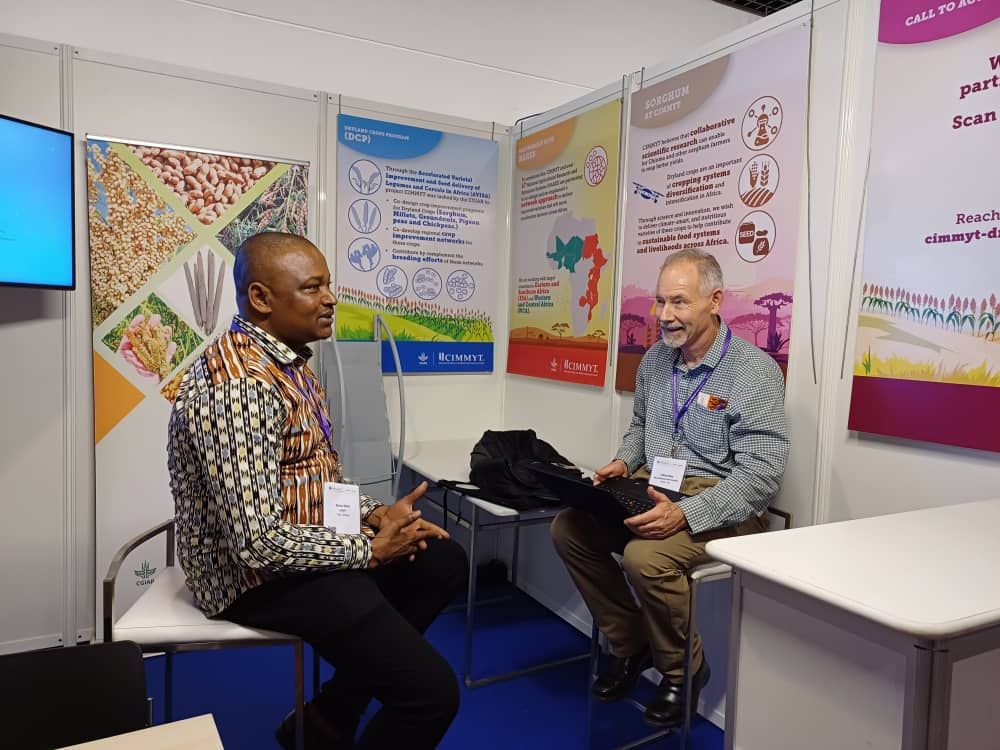
With climate change posing a significant threat to global agriculture, NARES partners involved in regional networks have delved into the pressing issues of enhancing sorghum production’s climate resilience. Rekiya Abdoulmalik, from the Institute of Agriculture Research (IAR) in Nigeria, presented a poster on the threats to sorghum cultivation in Nigeria posed by current security issues and potential climate change effects. The study evaluated 14 varieties of dwarf sorghum in multiple locations. The analysis identified stable, high-yielding varieties with the potential to contribute to Nigeria’s food security in the face of shifting environmental conditions.
Other NARES partners presenting posters included Henry Nzioka from Kenya Agricultural and Livestock Research (KALRO), who made a case for the biological control of the striga weed in sorghum. Citing technological advancements, he illustrated how the integration of climate-smart weed management technologies can lead to the control of the weed.
Another presentation by Charles Bett of KALRO focused on mechanization in the sorghum value chain, which revealed that investments in machinery and traction power have a positive and significant effect on sorghum yield. The findings recommend a shift in policy to help farmers afford small-scale machinery and gradually replace ox power with affordable machinery.
Baba Haoua, from INRAN, Niger, highlighted that introducing specific genes into sorghum varieties through conventional breeding will increase their nutritional content and identify promising lines for local farmers, providing a sustainable solution for improving sorghum for both grain and livestock feed applications.
Assitan Daou from the Institut d’Economie Rurale (IER) in Mali emphasized the suitability of sorghum as a crop for growing populations in varying climates and the significance of an agroecological transition for adaptation to climate change. His poster presentation centered on sorghum cropping systems under rainfed conditions, which aligned with the conference’s goals of increasing crop productivity, adapting to climate variations and bolstering the resilience of small-scale farmers.
The conference, according to Chris Ojiewo, Strategic Partnerships and Seed Systems lead for the Dryland Crops Program at CIMMYT, played a crucial role in sharing the latest sorghum research findings and their outcomes. “The conference provided an important platform for communicating advances in research and associated outputs and outcomes on sorghum as an important cereal grain contributing to food, nutrition and income securities and overall resilience in agrifood systems especially to smallholder farmers in areas prone to drought stress and more so in the face of changing and variable climates,” said Ojiewo.
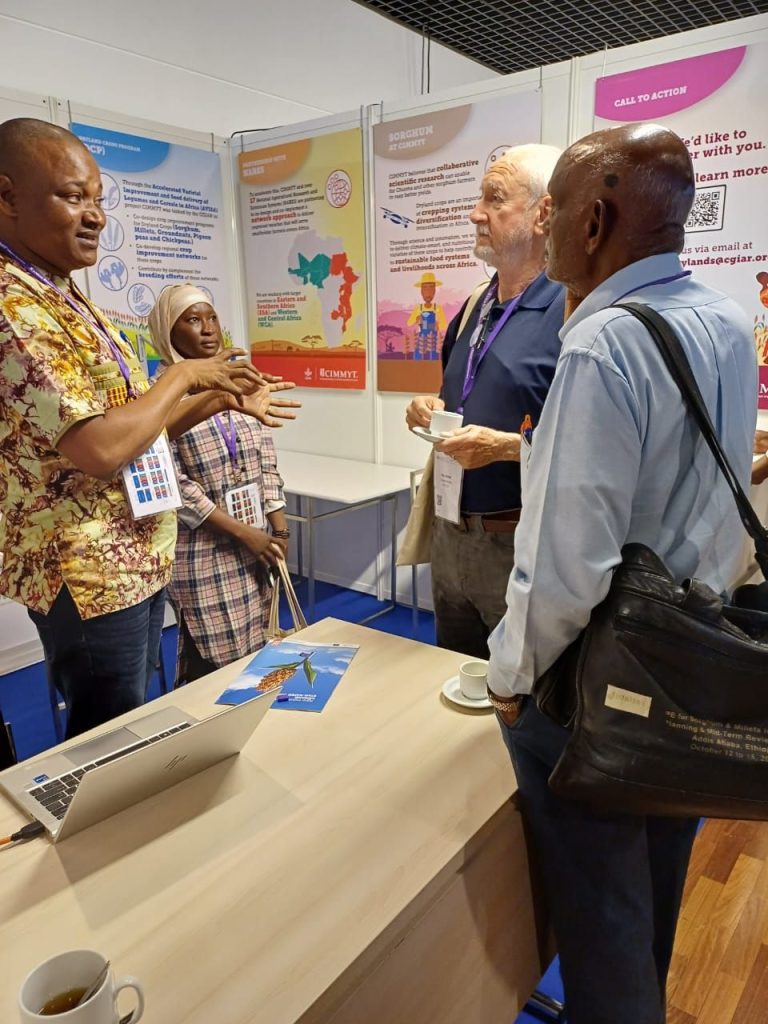
CIMMYT also set up an exhibition booth that provided an overview of the various activities undertaken as a part of its dryland crop programs and CGIAR-NARES improvement network. Senior officials of donor organizations consulted CIMMYT staff regarding approaches to dryland crops improvements, key achievements and the possibility of new partnerships.
The next 21st Century Global Sorghum Conference will be hosted by Texas University in Lubbock in September 2026.
